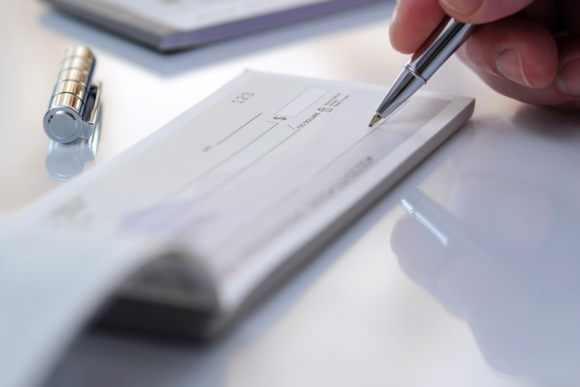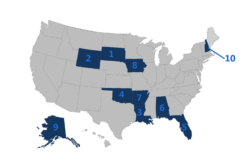People may not be writing checks as often as they used to, but there are still a number of reasons to keep a checkbook. This guide will cover some of those reasons, as well as how to order checks, write a check and balance a checkbook.
Why Do I Need Checks?
Debit cards, credit cards and digital payment methods have replaced check writing for routine purchases like groceries. But, there are still several reasons why you might need to write a check. Your apartment complex or local utility company may require payment by check.
Some contractors – like home repair service companies – may charge a fee to process a credit card payment. Having a checkbook saves you from having to make an extra trip to the bank to make a large cash withdrawal.
If you lose your debit card, your checkbook can cover you for non-cash purchases until a new one arrives. Checks are also safer to mail than cash.
How Do I Order Checks?
You will need to order checks from the bank that you use. You can usually do this through their website or on the phone. If you bank with a smaller credit union, you might need to stop in and order them in person. Some banks charge a fee for checks, but they may not charge for the first couple of checkbooks that you order each year. Check with your bank to see what their policy is. Your checks should arrive inside a box or a secure envelope with several checkbooks, each containing 30 or 40 checks. Some checkbooks will also include deposit slips for your bank or a section for balancing your checkbook.
How To Write a Check
Although all checks may be slightly different, they should contain the same basic elements. Here’s a breakdown of all the blanks you’ll see on a check and what you need to write in them:
- Date – Here is where you put the date that you’re writing the check. You can also post-date checks for when you want them cashed, if the recipient agrees. This is handy If you’re delivering a check in advance of when you want it cashed (for example, if you’ll be out of town when rent is due). You may have heard of a post-dated check.
You may also write a post-dated check if you don’t have the money required to cash the check at the time of writing, but the recipient must agree to wait to cash it until that date. If their bank accepts the check early, your check could “bounce.” That means:
you had inadequate funds when it was cashed. In some places, this could even be considered fraudulent.
- Pay to the Order of – This line is where you put the individual or company that you are making a payment to. Generally next to this line, you’ll find a dollar sign and a box where you put the amount you’re paying to the entity in number form.
- Dollars – Below the “Pay to the Order of” line, you’ll usually find a line that says the word “dollars” at the end of it. You write the amount that you’re paying in word form here. As an example, if you’re writing a check for $300.56, you would write “three hundred dollars and fifty six cents,’ or “three hundred dollars and 56/100” on this line.
The reason that you do this is so that the recipient of the check can’t alter the numerical value in the line above and try to take more of your money than you planned to give them.
- Memo – The “Memo” line (which will sometimes say “For” instead of “Memo”) is where you write a short note regarding the reason for the payment. It isn’t necessary to put anything on this line, but you can do it as a courtesy. Some banks will show this in the withdrawal.
- Signature – You must sign on the line to the right of the memo line in order to validate the check. If you don’t, the recipient can’t cash it.
Sample Check
The figure below shows what an average check looks like. The text on the check may not always be the same, but the layout is pretty standard.
It’s important to note that there is also a line for a signature on the back of every check. You don’t sign this line if you wrote the check. If you’ve received a check, you’ll “endorse” it by signing. Different banks and credit unions may require additional information from the recipient on the endorsement line, such as a date or a line disclosing that it’s for mobile (digital) check deposit.
Balancing a Checkbook
What does it mean to balance a checkbook?
Balancing a checkbook just means keeping track of your finances. It was more necessary before online banking and credit and debit cards became common.
If finances are tight, it may still be a good idea to balance your checkbook. Checks you write aren’t always reflected in your online banking balance immediately. Even if the recipient cashes it right away, it may take three or four days to be subtracted from your balance.
To keep track of purchases in your checkbook, use the balancing section to write the date, your current checking account balance, and what your balance will be after the amount of the check is removed. This small ritual can serve as a reminder that you don’t have as much money as is reflected on your online banking statement.




About the comments on this site:
These responses are not provided or commissioned by the bank advertiser. Responses have not been reviewed, approved or otherwise endorsed by the bank advertiser. It is not the bank advertiser’s responsibility to ensure all posts and/or questions are answered.